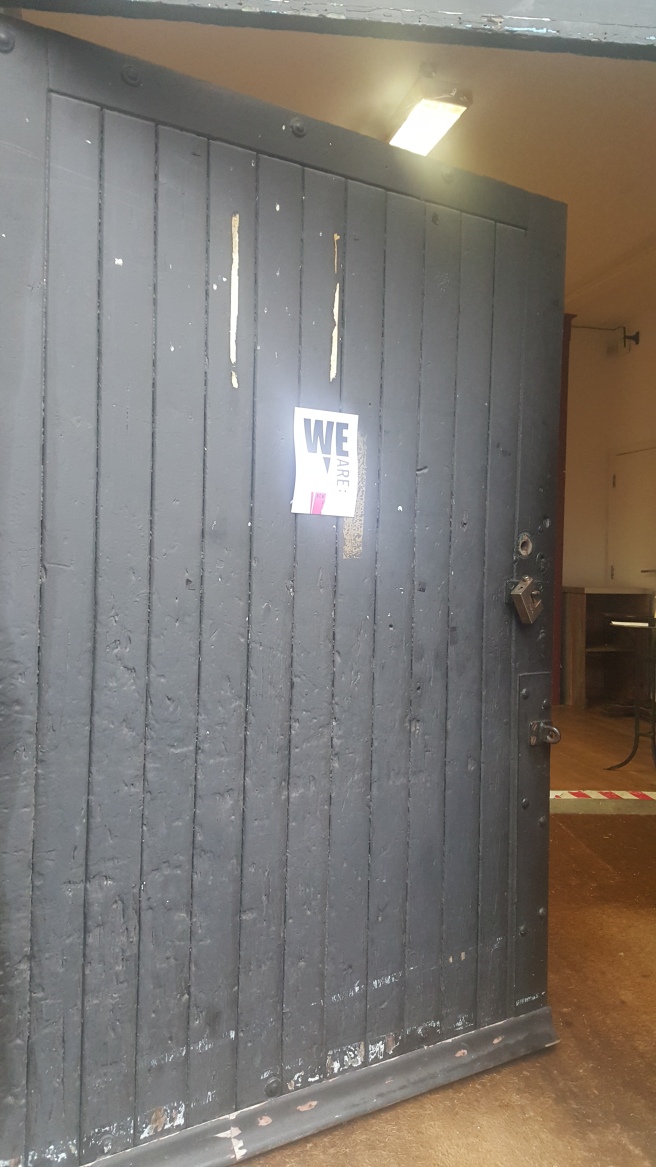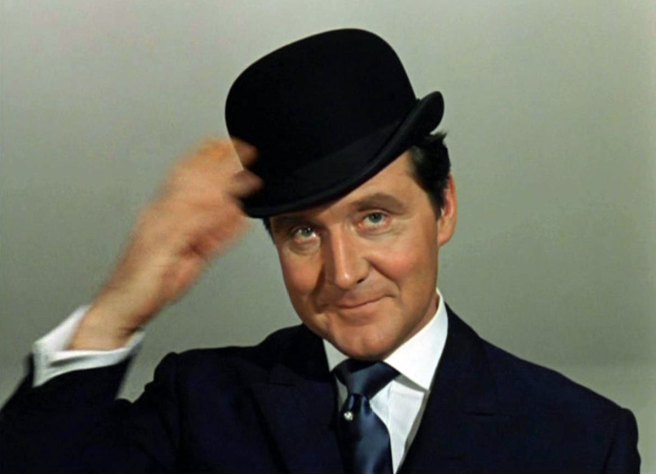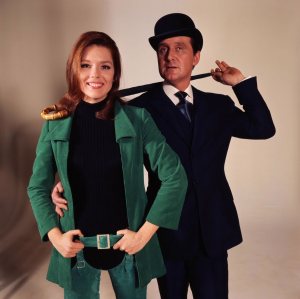By Chris Arning
“Film is too obviously a message for one not to assume that it is coded.”(Christian Metz – the Language of Cinema)
So I’ve just been to a showing of the Grenfell film by Steve McQueen and was blown away by it. The film is a 24 minute, two second colour video which contains no dialogue or commentary. It starts with bird song faded to black then we are on board a helicopter camera panoramic shot. We move steadily over green stretches of England, punctuated by clusters of terraced houses, the occasional football field, canals and sewage tanks. Throughout we hear the unsettling noises of what sounds like industrial machinery intermingled with copter blades and this seems to take at least five minutes. It is both meditative and disturbing because we think this is meant to be about Grenfell Tower, so why are we seemingly travelling across the hinterland of England? The suburbs is where we start. The denizens of most of the houses were most likely unaffected by the tragedy unfolding in June 2017. Does this also point to the cultural and political divide that has grown in the UK over the last decade?
It is when we see Wembley Stadium with its distinctive arch and the cluster of new builds around it that we gain our bearings, realise we are in North West London we realise we are only kilometres away from the Grenfell site. As we pass over Harlesden, the sound suddenly cuts out. Whatever we are travelling in becomes a glider; we become a disembodied seeing entity. When we arrive at the building it is shocking how raw it all is. It is a charred and gutted sarcophagus supported by scaffolding. In the years since the filming, clearly the building has been covered up the way the wounds of an incinerated body would be shrouded away. This has been done for many reasons, trauma reduction but also health and safety. As local residents we have become used to the green love heart emblazoned atop the tower; a symbol of unity and remembrance for campaigners, but seeing the tower in its raw state again was very salutary.
The Drone Gaze
The value of the film is to transform our gaze – but we start with something that is just unsettling: a disembodied perspective making its way steadily, ominously across the landscape. Although filmed using helicam, it has a deliberate drone effect and this is a drone view.
As Adam Rothstein author of Drone Theory writes: “Drones at their current level of technology allow us to observe large swathes of ground for an extended period of time. CCTV and satellite imagery each have their particular advantages for different surveillance and reconnaissance tasks. But drones allow a mobile platform that can remain over the ground at a distance that minimised the targe’s awareness of the platform, while also allowing live re-targeting of the area of focus.”
Rothstein continues: “This ever present visual relationship permanently alters human perception. Drone sensor operators talk about the range of way that starting through the drone’s camera for hours on end can change a person. This vernacular technology outlines the odd technological relationship the drone allows – that of generally passive observer, but with the extreme power that constant observation gives.”
Marshal McLuhan said the medium is the message. Drone or CCTV footage is about social control. When we are looking at aerial drone views, we are usually in the realm of invigilating savannah animals, of cadastral surveys, but also of crowd surveillance and of extra judicial assassinations. The drone view privileges the power of the voyeur to surveil others. Drone footage is never particularly relaxing: there is a sense of foreboding to it – especially when accompanied by the sonic concomitants of such footage, the humming buzz or industrial white noise devoid of emotion. Drone noise intimidates populations under occupation. Military drone executions take place at a distance. Drones are therefore the epitome of the banality of evil in the technological realm. They enable heinous acts to be done with the minimal fuss, personal involvement or moral embroilment. The famous philosophical thought experiment with the trolley car demonstrates that people tend to have fewer qualms pulling the lever than pushing the man onto the train tracks.
Kensington & Chelsea councillors can’t recall at enquiry hearings if the blandishments of more aesthetically pleasing cladding options blinded them to the more critical safety considerations that should have been prioritised in refurbishing Grenfell Tower. When being cloistered away from the consequences meets asymmetric power decisions made at a distance – whether operating a drone or managing housing stock – it can have terrifying repercussions.
The drone gaze is bereft of all empathy for what it takes in, akin to the beast ‘moving its slow thighs’ in the poem The Second Coming described by WB Yeats as having a “gaze blank and pitiless as the sun.”
So, the drone gaze is how we start the film with the sense of alienation and foreboding that that brings.
The spiritual gaze
But soon we settled into a sequence which feels closer to much of Steve McQueen’s video art oeuvre. McQueen’s films contain long uninterrupted takes that build tension, emphasise a need, or track real time.
Paul Gilroy writes of this section in the programme notes: “a soundless camera wheels around the damaged structure. The vertiginous movement of orbiting that fixed point induces nausea as viewers are pulled into the gyre. We move in close still and the animated geometry of the broken building disorders perception. The rotary motion becomes hypnotic and, as this monument to loss begins to transmit its own traumatising rhythm, we start to see the interior of the scaffolded structure”.
Like a massive aerial lathe, the ‘coptercam’ hones our reverence for the stricken object with its every rotation.
A reviewer put it like this: “McQueen likes to linger. And he is much less likely to use flashy camerawork or editing techniques to manipulate the viewer. Instead, he wants one to marinate in the moment…To frame it in a way to draw attention to what’s actually happening. Look at this. Look at this. Look at this.” I know I’m looking.”
This was forensic scrutiny but the camera also sacralised the space for the moments we were invited to stay in it – so it was also a guided visit and chance for a harsh, confronting contemplation.
The gaze undoubtedly deepened many viewers’ appreciation of a devastating trauma. We see the tattered exoskeleton with beams and girders still hanging off it and blackened interiors. The helicopter comes disturbingly close to the building and lingers upon facets of the upper parts of the structure. We are mesmerised by the visual spectacle. For my part, before long I passed into a form of meditative reverie, devoting my attention to every cell. I tried to sympathetically imagine in each cell the suffering though I knew I never could know the enormity of it. All I could do was murmur a mantra, may all beings be happy, and free from suffering. It was harrowing viewing, it became hard to watch eventually and admit I welled up at one point.
The invitation to contemplate was excruciating but also moving. In the Tibetan Buddhist tradition, monks and adepts of meditation visit burial grounds to remember the dead and muse on impermanence and get in touch with their own mortality. Grenfell Tower and the deceased are honoured here as such.
Cinematographic Tribute
As the cam repeatedly spins is where the power of the film really begins for me because the circumambulation of the building has huge significance. Beyond the forensic vista it provides into the guts of the structure to reveal a full picture of the devastation, there is a reverence. Circumambulation has a strong spiritual significance. In Islam, pilgrims to Mecca circumambulate the black stone Ka’aba, to demonstrate a unity of faith. I do not know whether the symbolism was deliberate but the resemblance was not lost on me. As someone who is affiliated with Buddhism I know that you pay tribute to the passing of a spiritual person by walking around a stupa or burial mound. This is how the Buddha, Siddhartha Gautama, said he wanted to be honoured. I have myself done this at a memorial for a deceased friend. Of course, being Steve McQueen, all this is implicit. There is no overt sentiment in the shooting of the film. It was very stark. Indeed, the beauty of the film to my mind is the way it combines intense focus on the rapid destruction of a whole living ecosystem while at the same time displaying a tender monument to the dignity of those who keep pushing for justice, to keep the memory of the dearly departed alive. This is a McQueen hallmark:
“He inserts moments that are Deleuzian time-images, disrupting expectations, pausing the conventional narrative progression and in the process implicating the viewer in the content. The features, for this reason, function as unique hybrids between the time-image and the moving image.”
For me, the greatness of this simple film was precisely the way it subtly oscillates between the technologized, minatory gaze of the drone – the tool of surveillance and death – and a more sympathetic and reverential, human gaze; still harsh but with the transmutation of spiritual wrath confined to spiritual beings and suffused with knowledge and empathy for the monumental importance of what happened here. The omniscient gaze of a God consciousness. McQueen achieves this collision of gazes toggling between these two views aesthetically through skilful use of camera work and manipulation of sound. The dignified circumambulation is the cinematic equivalent of the Grenfell silent walks that were initially organised monthly and are now held 11 days before Christmas and on the anniversary of the disaster.
The silent dénouement
The end of the film is poignant and beautiful. Unexpectedly, the director breaks the silence and brings the ambient noise back. We hear the ingress of a Hammersmith and City line train into Latimer Road. The everyday hustle and bustle around the Lancaster West Estate rushes back. This is a place where I have a close friend; which houses the Aldridge Academy where I have volunteered many times at a homeless shelter, and the Kensington Leisure Centre where I swim every week in the shadow of the tower. In other words, life goes on – this is a reminder that those closest to the deceased have to deal with a crushing attrition; calls for justice in the face of implacable systems of law, government and media that long ago stopped responding to demands for justice for the crime. This is a visual protest against the enormous condescension of the British establishment in the face of a horrendous atrocity.
Even the process of planning a fitting memorial, undertaken by bereaved and local residents has been subjected to myopic control by the government a further indignity. As Tom, editor of Urban Dandy writes: “There must be no fait accompli regarding the way we, as a community and as a nation, honour the victims of Grenfell. The site must never become a reflection of establishment control; devoid of imagination and empathy, a symbol of class war and indifference.”
It is precisely this indifference the film is designed to shake us out of. Estrangement – a term identified by the Russian formalists to name the way we are shaken out of our sleep walking. All the best art works recalibrate our senses through estrangement. It is an antidote to complacency and indifference. A quote from Paul Gilroy in the film programme seems apposite: “The implicit obscenity of the Grenfell fire has been made to look normal, to appear routine. We have been habituated to that blankness and are encouraged to imagine that there can be no alternatives to this particular way of organising human life and calculating its minimal transient value”
Everyone involved with the Grenfell Inquiry should be forced to watch this amazing film. TS Eliot winning poet Roger Robinson writes in a tribute in his 2019 collection Portable Paradise:
Grenfell
The building burned,
so the council blamed the contractors
who shredded all the papers;
so the contractors blamed
health and safety for passing
all the required tests;
so the prime ministers
came, saw and left,
and talked to no one
and shook no-one’s hand
meanwhile its tenants are left
to grieve in sterile hotels,
with nothing to bury but ash,
and survivors walk up like zombies
trying not to look up
at the charred gravestone.
people still cry
nobody took the blame.
We cannot really talk about this film without mentioning trauma. We CoProduce organised an event in June 2019 with Dr Gabor Maté in order to invite local residents to explore their trauma in the aftermath of the fire. From an article in Urban Dandy: “Trauma from a huge-scale disaster starts to manifest two years after an event; it is what we carry inside ourselves. So many local people had filled the vacuum left by the council and national government; mindful of those who had lost everything, or everyone, the trauma was suppressed but easily triggered.”
This reflects the breadth and depth of the PTSD across North Kensington. Of course, the healing needs to happen but the impacted communities do not want this event to be brushed under the carpet. Grenfell United continue to campaign to prevent another atrocity elsewhere, while in the absence of any sustained media interest, local campaigners struggle against the council as it returns to its pre-fire policies, shielded by a formidable PR budget. This sedulously stunning film coming before the Government Inquiry will publish its findings, reminds us that our anger as local residents at the continuing impunity was, and is, righteous, and the 72 lives needlessly lost are being grieved as keenly every day.
Chris Arning, 2023
BIBLIOGRAPHY (unfinished)
The Drone Theory – Adam Rothstein
The Language of Cinema – Christian Metz
The Auteur Theory: Steve McQueen – Paolo’s film blog
Portable Paradise – Roger Robinson
Grenfell: Programme – Paul Gilroy
Urban Dandy (blogs, multiple) – Thomas Charles
Celebrating The Charnel Ground: Notes on Death and Meditation – Stephen Butterfield
Images from Serpentine Galleries





 3.5/5
3.5/5














